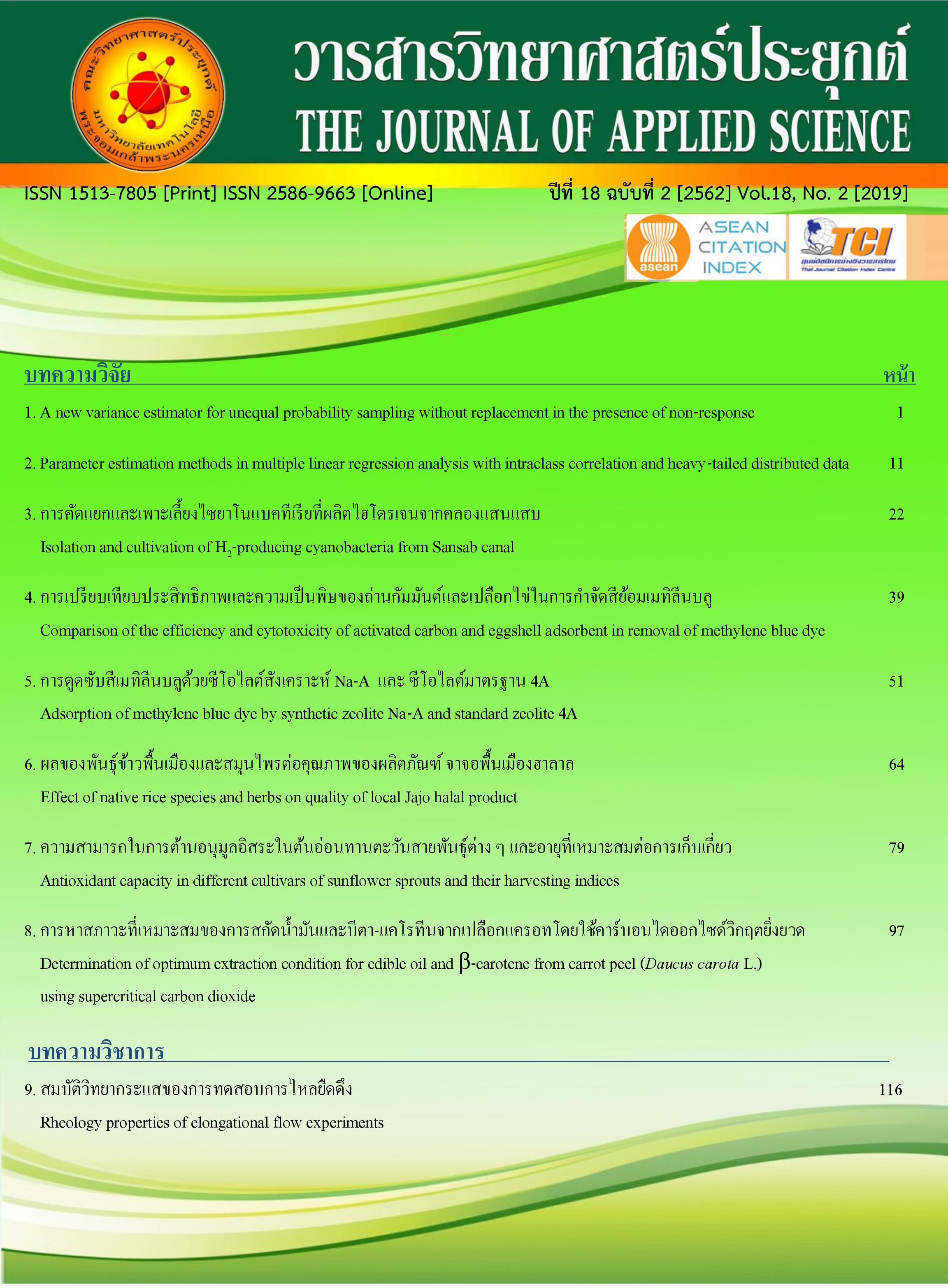การเปรียบเทียบประสิทธิภาพและความเป็นพิษของถ่านกัมมันต์และเปลือกไข่ในการกำจัดสีย้อม methylene blue
คำสำคัญ:
คาร์บอน, ความเป็นพิษต่อเซลล์, สีย้อม, เปลือกไข่, จุลพยาธิวิทยาบทคัดย่อ
ปัจจุบันมีการใช้สีย้อมกันอย่างมากเนื่องจากมีประโยชน์หลายอย่าง แต่ทุกสิ่งย่อมมีทั้งข้อดีและข้อเสีย สีย้อมเหล่านี้ก็มีความอันตรายอยู่ เช่น มีสารก่อมะเร็ง สามารถทำให้เกิดอันตรายร้ายแรงต่อสิ่งมีชีวิตในน้ำและผู้ใช้น้ำ การทิ้งสีย้อมลงในแหล่งน้ำโดยไม่มีการบำบัดก่อน ทำให้สีย้อมเหล่านี้เกิดการตกค้างในแหล่งน้ำ มีผลต่อสัตว์ รวมถึงมนุษย์ที่มีการใช้น้ำหรือมีการบริโภคสัตว์จากแหล่งน้ำ ส่งผลเสียต่อสิ่งแวดล้อม จึงจำเป็นที่จะต้องหาวิธีบำบัดน้ำที่มีสีย้อมปนเปื้อนอยู่ก่อนที่จะปล่อยลงในแหล่งน้ำ การใช้วัสดุเหลือใช้ทางการเกษตรมาเป็นตัวดูดซับ เช่น เปลือกไข่คือทางเลือกที่ดีเนื่องจากมีต้นทุนต่ำ หาได้ง่าย ใช้ในครัวเรือนและเป็นวัสดุเหลือใช้ที่มีมาก โดยคณะผู้จัดทำต้องการทำการทดสอบเปรียบเทียบการดูดซับสีย้อม methylene blue กับถ่านกำมันต์ซึ่งเป็นวัสดุที่มีการดูดซับสีได้ดีแต่กระบวนการผลิตถ่านนั้น ส่งผลให้เกิดมลพิษ ทำให้เกิดภาวะโลกร้อนเนื่องจากมีการปลดปล่อยก๊าซเรือนกระจก โดยทำการวัดปริมาณสีย้อม methylene blue ที่ถูกดูดซับด้วยเครื่อง UV-Visible spectrophotometer เปรียบเทียบกันและนำไปทดสอบความเป็นพิษโดยใช้ไรทะเลเป็นสัตว์ทดลอง เลี้ยงไว้ 24 ชั่วโมงและนำเนื้อเยื่อของไรทะเลมาทำพาราฟินบล็อกและย้อมสีแล้วส่องด้วยกล้องจุลทรรศน์แบบใช้แสงเพื่อดูลักษณะความผิดปกติที่เกิดขึ้น พบว่าเปลือกไข่สามารถนำมาใช้เป็นตัวดูดซับสีย้อม methylene blue ที่ปนเปื้อนอยู่ในน้ำได้เช่นเดียวกับถ่านกัมมันต์แต่จะต้องใช้ในปริมาณที่มากกว่า การใช้เปลือกไข่เป็นตัวดูดซับสีย้อม methylene blue ไม่ได้ก่อให้เกิดความเป็นพิษต่อเซลล์มากกว่าถ่านกัมมันต์ เปลือกไข่นับเป็นอีกทางเลือกที่ดีสำหรับการบำบัดน้ำที่มีการปนเปื้อนของสีย้อม methylene blue


